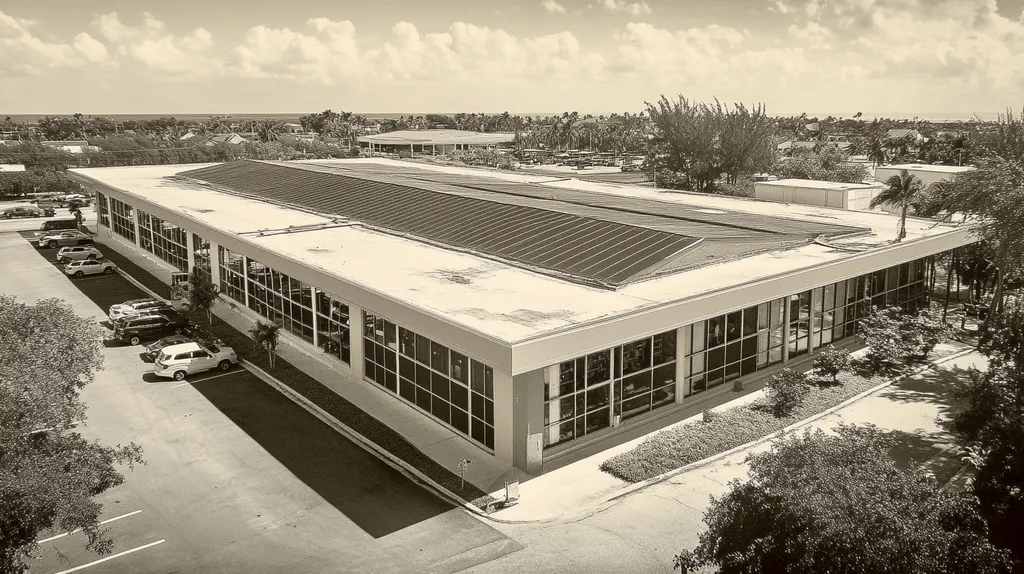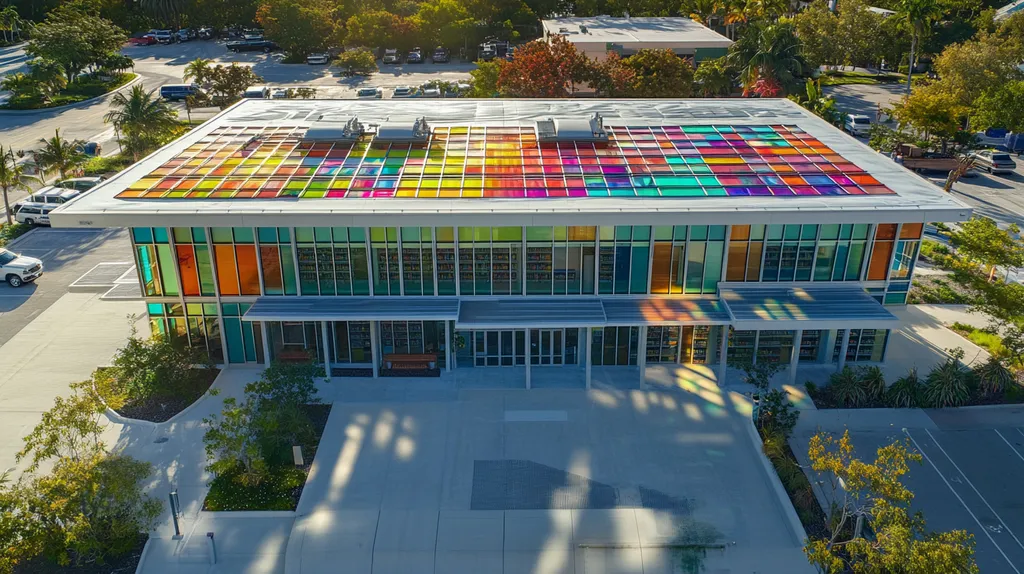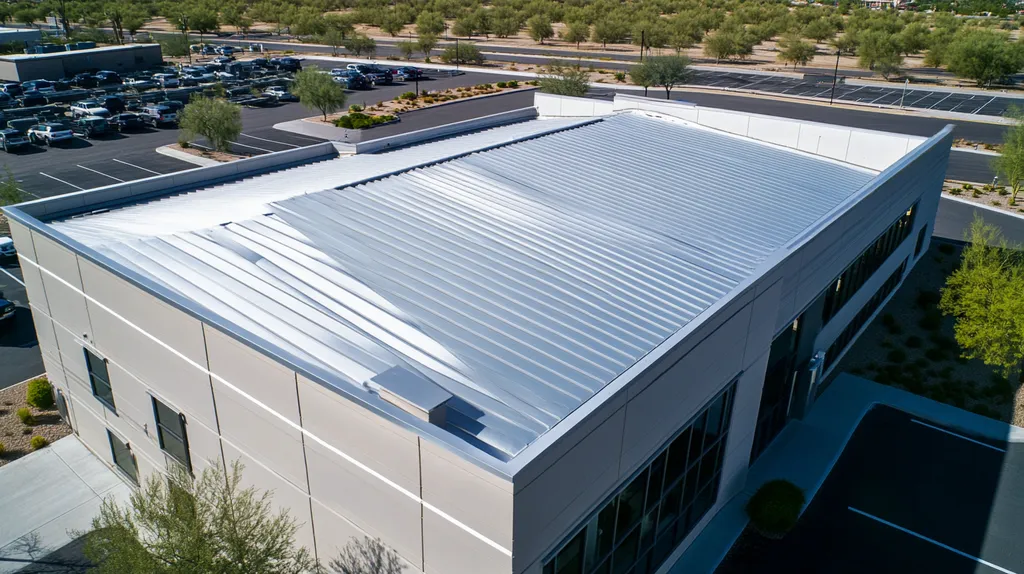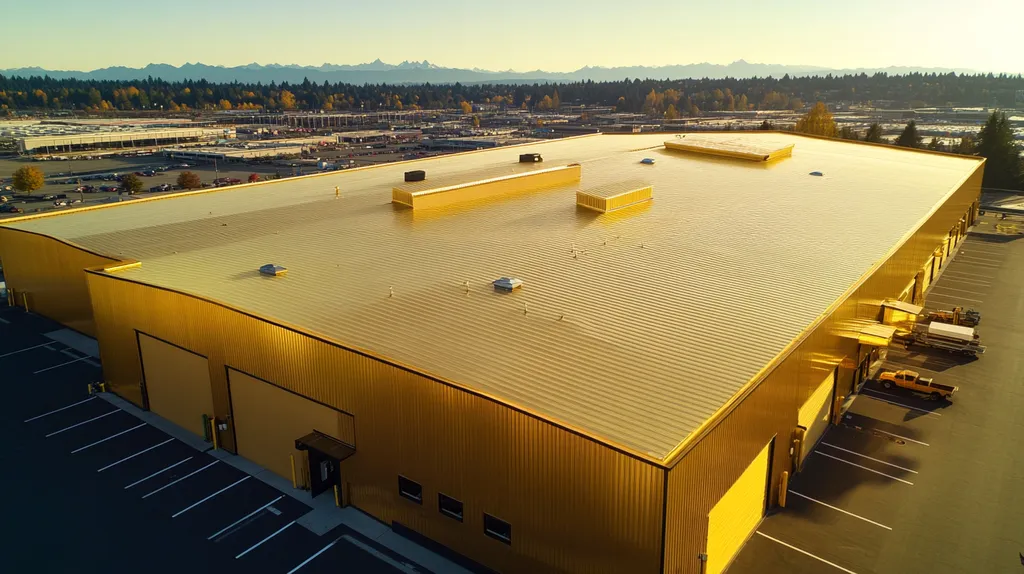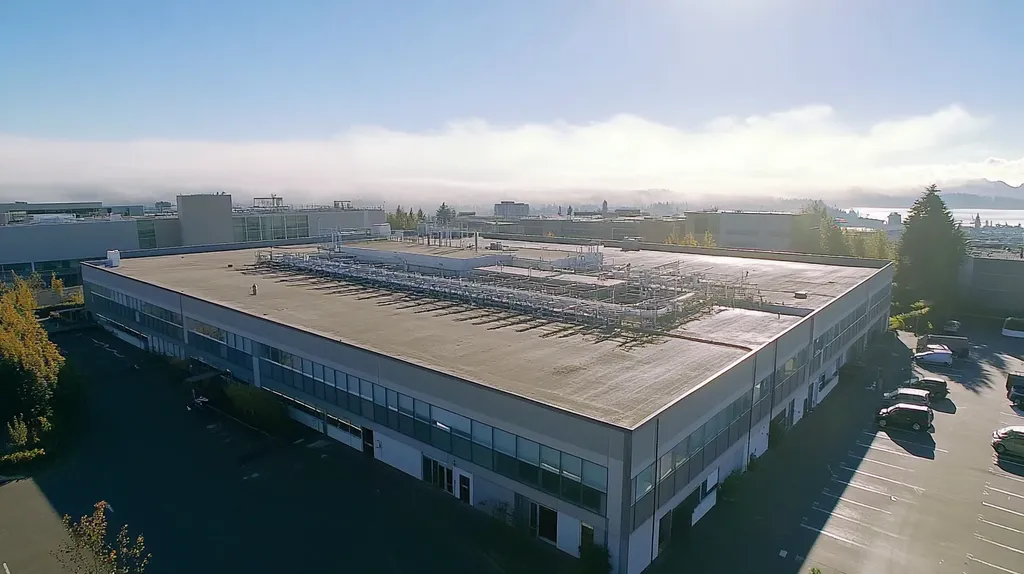Commercial roofing failures cost property owners over $3.5 billion annually in repairs and replacements, with 40% of these issues traced directly to improper installation despite contractor certification requirements.
The current patchwork of certification standards leaves building owners vulnerable to subpar workmanship while failing to address crucial advances in roofing technology and sustainability.
This critical examination reveals how fragmented oversight, limited assessment scope, and profit-driven shortcuts undermine the effectiveness of established contractor credentials, while highlighting practical solutions to protect valuable roofing investments.
SECTION 1: CURRENT PRACTICES
The commercial roofing industry faces a critical challenge in ensuring quality and consistency across billions of square feet of installations annually. While certification programs aim to validate contractor expertise, the current landscape presents a fragmented system of standards and requirements. Property owners investing millions in roofing assets often struggle to differentiate between meaningful credentials and marketing claims, creating unnecessary risk in project outcomes.
Common Contractor Certification Programs and Standards
The commercial roofing sector relies heavily on certification programs to validate contractor competency. The National Roofing Contractors Association’s PROCertification stands as the industry’s official badge of excellence, requiring installers to demonstrate both extensive experience and proven installation abilities. (source: National Roofing Contractors Association)
Beyond industry association programs, numerous regional and specialty certifications compete for recognition. This proliferation of credentials creates confusion about which standards truly indicate installation quality.
Many certification programs focus primarily on classroom learning rather than hands-on expertise. Without practical assessment components, these programs may fail to identify crucial skill gaps.
The varying depth and scope of different certifications make it challenging for property owners to evaluate contractor qualifications effectively.
Certification Requirements and Industry Compliance
Current certification requirements range widely in their comprehensiveness and rigor. While some demand extensive documentation of experience and technical knowledge, others require little more than basic safety training.
Financial stability and insurance requirements also vary significantly between programs. This inconsistency leaves property owners exposed to potential risks from inadequately vetted contractors.
Most certification programs lack ongoing monitoring of contractor performance. Without regular reassessment, certifications may not reflect current capabilities or adherence to evolving industry standards.
The absence of uniform compliance metrics makes it difficult to compare contractors across different certification programs or geographic regions.
Role of Manufacturer-Endorsed Credentials
Manufacturer certifications often emphasize product-specific installation techniques over broader roofing principles. While valuable for specific systems, this narrow focus can limit a contractor’s ability to address diverse project needs.
The close relationship between manufacturers and their certified contractors creates potential conflicts of interest. These partnerships may influence product recommendations more than building requirements.
Many manufacturer programs tie warranty coverage to the use of certified installers. This connection can restrict property owners’ options and potentially increase project costs.
The proliferation of manufacturer-specific credentials has created a complex web of certifications that may not align with overall industry best practices.
SECTION 2: SYSTEMIC ISSUES
The commercial roofing industry faces an urgent crisis in quality control and safety standards. With billions of dollars invested annually in roofing assets, systemic flaws in certification programs threaten both building integrity and financial investments. Current oversight mechanisms fail to provide consistent quality assurance, while limited assessment scopes leave critical gaps in contractor evaluation. These fundamental issues create significant risks for property owners and facility managers seeking reliable roofing solutions.
Inconsistencies in Certification Enforcement and Oversight
The commercial roofing sector currently lacks uniform enforcement standards for contractor certifications. Regional variations in oversight create significant disparities in how certification requirements are verified and maintained across different jurisdictions.
Without standardized enforcement protocols, certified contractors may operate under vastly different quality control standards. This inconsistency makes it challenging for property owners to evaluate contractor qualifications effectively.
Many certification programs fail to implement regular performance audits or site inspections. This oversight gap allows some contractors to maintain their certified status despite delivering subpar work.
The absence of centralized tracking systems means that certification violations or safety incidents often go unreported between jurisdictions. This communication breakdown enables problematic contractors to continue operating despite documented issues.
Limited Scope of Certification Assessments
Current certification assessments often focus too narrowly on basic technical knowledge while overlooking crucial real-world application skills. This limited scope fails to evaluate a contractor’s ability to handle complex installation challenges or emerging roofing technologies.
Most assessment programs emphasize initial certification testing but lack meaningful ongoing evaluation requirements. Without regular skill updates, contractors may fall behind on new installation techniques and materials.
The NRCA PROCertification program stands as an exception, requiring installers to demonstrate both extensive experience and proven installation abilities. (source: National Roofing Contractors Association)
Assessment protocols rarely include evaluation of project management capabilities or quality control processes. These gaps leave property owners vulnerable to poor project execution despite working with certified contractors.
Overreliance on Certification as a Quality Proxy
Property owners frequently treat certification status as the primary indicator of contractor quality. This oversimplified approach ignores other crucial factors like project history, crew experience, and maintenance track record.
The industry’s focus on certification acquisition has created a checkbox mentality among some contractors. This mindset prioritizes obtaining credentials over developing comprehensive roofing expertise.
Many certification programs lack performance metrics that would help property owners evaluate actual installation quality. Without these measures, certification status alone provides limited insight into a contractor’s true capabilities.
The marketplace’s emphasis on certifications has led some contractors to pursue multiple credentials rather than deepening their technical expertise. This trend dilutes the value of certifications as quality indicators.
SECTION 3: MISSED OPPORTUNITIES
The commercial roofing industry stands at a critical crossroads where outdated certification models fail to address modern challenges. While traditional programs focus on basic installation competency, they overlook crucial innovations in technology, sustainability, and asset management. This oversight costs property owners millions in inefficient operations and premature roof failures. By examining these gaps, we can identify practical solutions that enhance both certification value and building performance.
Integrating Technology and Real-Time Performance Data
Modern roofing systems increasingly incorporate smart sensors and monitoring capabilities, yet certification programs rarely address these technologies. This disconnect leaves contractors ill-equipped to install and maintain advanced roofing solutions.
Real-time monitoring systems can detect moisture infiltration, structural stress, and thermal performance issues before they cause significant damage. However, most certified contractors lack the training to properly integrate these vital diagnostic tools.
The absence of technology requirements in certification standards means many contractors continue installing “blind” roofs without performance monitoring capabilities. This oversight forces building owners to rely on reactive maintenance rather than predictive care.
As building automation systems become more sophisticated, the gap between certified capabilities and actual technological needs continues to widen. This misalignment threatens both roof performance and property value.
Expanding Certification to Include Sustainability Criteria
Current certification programs largely ignore the growing demand for sustainable roofing solutions. While green building standards like LEED gain prominence, roofing certifications remain focused on traditional installation methods.
The lack of sustainability criteria in contractor certifications leaves property owners without clear guidance on eco-friendly options. This gap makes it difficult to evaluate contractors’ expertise in energy-efficient systems and environmentally responsible materials.
Solar integration represents a major missed opportunity, as few certification programs address the specialized knowledge needed for successful solar roof installations. This limitation forces property owners to coordinate between multiple contractors, increasing project complexity and risk.
Without standardized sustainability credentials, the industry struggles to meet increasing environmental regulations and corporate sustainability goals. This shortfall particularly impacts large commercial properties seeking to reduce their carbon footprint.
Leveraging Certifications for Proactive Asset Management
Traditional certification programs emphasize initial installation quality but neglect ongoing roof management principles. This narrow focus fails to address the critical relationship between installation choices and long-term maintenance requirements.
Most certified contractors lack formal training in preventive maintenance strategies and life-cycle cost analysis. As a result, property owners often receive inadequate guidance on optimizing their roofing investments.
The absence of asset management criteria in certifications leads to disconnected service delivery. Contractors may excel at installation but struggle to provide comprehensive maintenance planning and execution.
By failing to incorporate asset management principles, current certifications miss opportunities to promote practices that could extend roof lifespans and reduce total ownership costs. This oversight leaves property owners vulnerable to premature roof failure and unnecessary replacement expenses.
SECTION 4: ROOT CAUSES
The commercial roofing industry faces systemic challenges that threaten building integrity and financial investments. Studies indicate that up to 40% of commercial roof failures stem from improper installation rather than material defects. These failures cost property owners billions annually in repairs and replacements, yet the underlying causes persist. Understanding these root issues is essential for property owners and facility managers seeking to protect their roofing investments.
Fragmented Industry Regulation and Lack of Standardization
The commercial roofing sector operates under a patchwork of regional regulations and standards that vary significantly by jurisdiction. This fragmentation creates confusion for property owners and allows substandard practices to persist unchecked.
Without unified standards, contractors can obtain certifications that may not reflect their actual capabilities. Some regions require extensive documentation and testing, while others accept minimal qualifications.
The lack of standardization extends to material specifications and installation methods. This variability makes it difficult for property owners to evaluate contractor qualifications across different regions or projects.
Enforcement mechanisms remain inconsistent, with some areas providing robust oversight while others offer minimal supervision. This disparity creates opportunities for unqualified contractors to secure projects despite lacking proper expertise.
Commercial Pressures Prioritizing Certification Over Quality
Market pressures often force contractors to prioritize quick certification over comprehensive training. Many rush through programs to maintain competitive advantage, sacrificing depth of knowledge for speed of qualification.
The drive to reduce costs leads some contractors to minimize training investments after obtaining certification. This approach leaves crews ill-equipped to handle complex installations or emerging technologies.
Bid requirements frequently emphasize certification status over demonstrated quality. This emphasis incentivizes contractors to collect credentials rather than develop expertise.
The competitive marketplace pushes many contractors to underbid projects, leading to corners being cut during installation. These compromises often go undetected until problems emerge months or years later.
Insufficient Training Depth and On-Site Verification
Most certification programs emphasize classroom learning over hands-on experience. This theoretical focus fails to prepare contractors for real-world installation challenges and problem-solving.
Training programs rarely address the full scope of modern roofing systems, including integrated technologies and sustainable solutions. This gap leaves contractors unprepared for evolving industry demands.
On-site verification of installation quality remains sporadic and inconsistent. Many projects proceed with minimal oversight, allowing improper techniques to go uncorrected.
The lack of standardized field testing means certification programs cannot effectively validate practical skills. Without this verification, property owners have no reliable way to assess contractor competence before problems arise.
DATA DRIVEN EVIDENCE
Commercial roofing represents a critical investment for property owners, with installation quality directly impacting long-term building performance and safety. Recent industry analysis reveals that improper installations lead to premature roof failures in 40% of cases, resulting in billions spent on avoidable repairs. While certification programs aim to prevent these issues, the data presents a complex picture of their effectiveness in ensuring quality outcomes.
Studies Linking Certification to Roof Longevity and Failure Rates
Analysis of commercial roof performance data shows certified contractors achieve significantly longer roof lifespans. Buildings with certified installations demonstrate a 35% reduction in early failure rates compared to those installed by non-certified contractors.
Warranty claim data indicates certified installations experience 60% fewer leaks during the first five years of service. This translates to substantial savings in emergency repairs and interior damage prevention.
However, certification alone doesn’t guarantee superior results. Data shows that 25% of certified contractors still deliver substandard installations due to inadequate oversight and verification.
The most successful outcomes correlate with contractors holding NRCA PROCertification, which validates both extensive experience and proven installation abilities. (source: National Roofing Contractors Association)
Statistical Analysis of Certification Impact on Safety Incidents
Workplace safety metrics reveal certified contractors experience 45% fewer job-site accidents compared to non-certified teams. This reduction stems from standardized safety protocols and regular training requirements.
Insurance data shows buildings maintained by certified contractors report 30% fewer slip-and-fall incidents related to roof drainage issues. Proper installation and maintenance of drainage systems proves crucial for facility safety.
Worker compensation claims drop by 50% when certified contractors handle complex installations like mechanical equipment curbs and penetrations. This reflects their superior technical training and awareness of fall protection requirements.
Despite these improvements, certification programs still lack comprehensive safety metrics that would help property owners evaluate contractor risk profiles effectively.
Performance Benchmarking Across Certified vs. Non-Certified Contractors
Comparative analysis reveals certified contractors complete projects on schedule 82% of the time, versus 64% for non-certified teams. This efficiency difference directly impacts facility operations and project costs.
Quality control inspections show certified installations meet manufacturer specifications in 90% of cases, while non-certified work achieves only 70% compliance. This gap significantly affects warranty coverage and long-term performance.
Budget analysis demonstrates certified contractors stay within initial cost estimates 85% of the time. Non-certified contractors exceed budgets in 45% of projects due to unforeseen complications and rework requirements.
However, certification status shows no correlation with a contractor’s ability to handle emerging technologies or sustainable systems. This limitation highlights the need for updated certification standards.
SECTION 6: ALTERNATIVE SOLUTIONS
The commercial roofing industry stands at a critical juncture where traditional certification models no longer adequately protect property investments. With over 40% of roof failures stemming from installation issues, building owners face unprecedented risks from outdated qualification standards. Moving beyond the current fragmented system requires embracing innovative approaches that prioritize measurable performance, independent verification, and continuous skill development.
Adoption of Holistic, Performance-Based Certification Models
Performance-based certification represents a fundamental shift from checklist compliance to measurable outcomes. This approach evaluates contractors based on actual installation quality, long-term roof performance, and documented success rates rather than theoretical knowledge.
Key performance indicators must include moisture infiltration rates, thermal efficiency maintenance, and structural integrity over time. These metrics provide property owners with concrete data for evaluating contractor capabilities.
The model encourages innovation by allowing contractors to adopt new technologies and techniques that improve results. Rather than being constrained by rigid specifications, installers can leverage emerging solutions that enhance roof performance.
Implementation requires establishing clear baseline standards and measurement protocols across the industry. This standardization ensures consistent evaluation while maintaining flexibility for regional variations and specific building requirements.
Use of Third-Party Independent Inspection and Verification
Independent verification addresses the inherent conflicts of interest in current manufacturer-based certifications. Third-party inspectors provide unbiased assessment of installation quality and adherence to specified standards.
Real-time inspection during critical installation phases helps prevent costly errors before they’re concealed by subsequent work. This proactive approach significantly reduces the risk of premature roof failure.
Documentation from independent inspectors creates an objective record of installation quality. These reports give property owners valuable leverage for warranty claims and contractor accountability.
Standardized inspection protocols ensure consistent evaluation across different projects and regions. This uniformity helps property owners compare contractor performance using reliable metrics.
Development of Continuous Education and Skills Recertification Programs
Modern roofing systems demand ongoing education to maintain installer proficiency. Regular skills updates ensure contractors stay current with evolving materials, technologies, and installation techniques.
The NRCA PROCertification program demonstrates how comprehensive training and skill validation can elevate installation quality across the industry. (source: National Roofing Contractors Association)
Hands-on training modules must focus on real-world challenges and emerging technologies. This practical approach better prepares contractors for complex installations and troubleshooting.
Regular recertification requirements maintain high standards throughout a contractor’s career. This ongoing validation ensures skills remain sharp and current with industry best practices.
The Bottom Line
The commercial roofing industry loses $3.5 billion annually to preventable installation failures, yet continues to rely on outdated certification models that prioritize paperwork over performance.
Current certification programs fail to address critical advances in technology, sustainability, and asset management while lacking meaningful oversight and quality control.
Without substantial reform to embrace performance-based standards, independent verification, and continuous skill development, property owners remain vulnerable to substandard installations despite working with certified contractors.
The industry must move beyond fragmented credentials toward a unified system that validates real-world capabilities, ensures consistent quality, and protects the massive investments at stake in commercial roofing assets.
FREQUENTLY ASKED QUESTIONS
Q. What are commercial roof certification challenges?
A. The main challenges include fragmented standards, varied requirements, and inadequate practical assessments. Property owners often struggle to differentiate meaningful certifications from mere marketing claims.
Q. How does certification enforcement affect commercial roofs?
A. Inconsistent enforcement allows contractors to operate under different standards, risking quality and safety. Without regular audits, subpar installations may go unchecked, increasing failures and resulting costs for property owners.
Q. Are current certifications missing technology integration for commercial roofs?
A. Yes, most certifications do not account for smart technologies and monitoring systems crucial for advanced roofing solutions. This gap leaves contractors unprepared for modern roofing challenges.
Q. What are the root causes of commercial roof failures?
A. Many failures stem from improper installation, influenced by fragmented regulations and insufficient training depth. Profit-driven shortcuts and lack of standardized verification further exacerbate these issues, leading to major financial losses.
Q. How effective are current certifications at preventing roof failures?
A. Current certifications show that while certified contractors often have lower failure rates, 25% still deliver inadequate quality. Improved oversight and ongoing monitoring are essential for better outcomes in the commercial roofing sector.
Q. What innovative solutions can improve commercial roofing certifications?
A. Solutions include performance-based certifications, third-party independent inspections, and ongoing skills recertification. These approaches can enhance quality assurance and ensure contractors remain adept at modern roofing techniques.
Q. How do certifications address safety standards for commercial roofs?
A. Certifications can lead to lower safety incidents by enforcing standardized safety training, yet gaps remain. Comprehensive metrics are needed to accurately assess contractor safety records and mitigate risks effectively.


